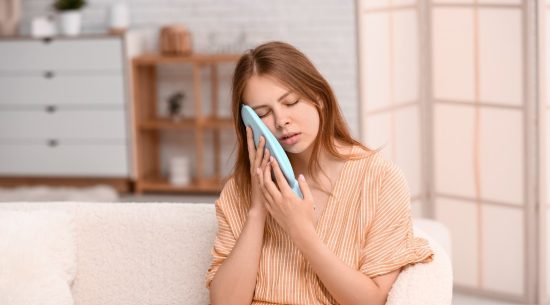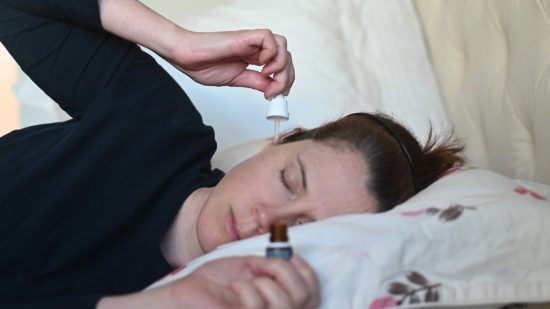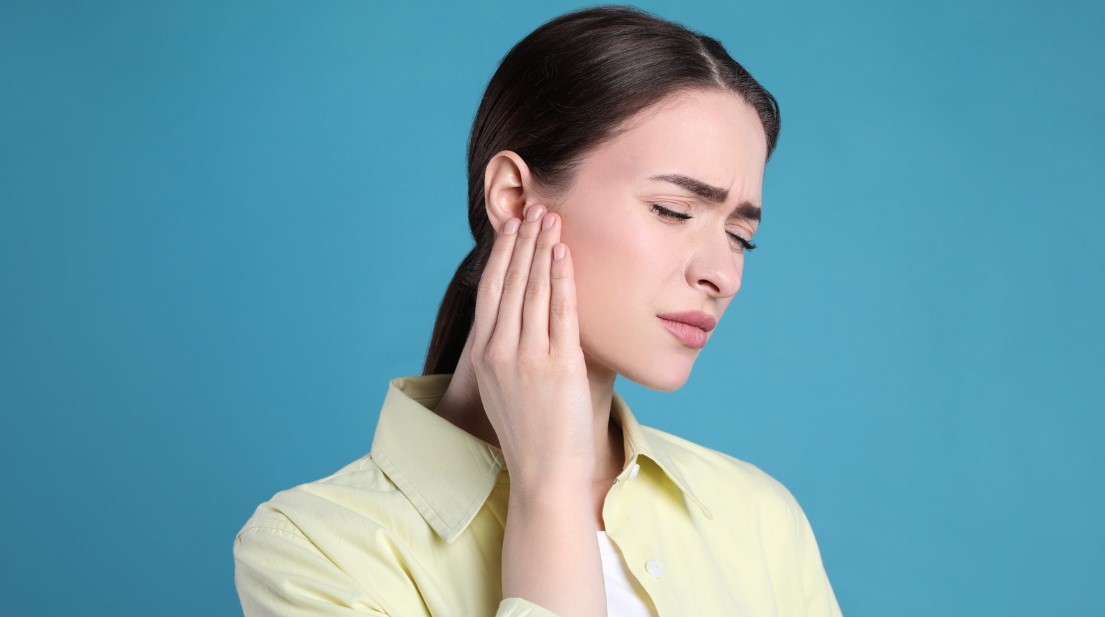Have you ever experienced the frustrating sensation of water trapped in your ear? It’s uncomfortable and can also affect your hearing and cause discomfort. From swimming, showering, or sudden downpours, getting water stuck in your ear can be quite bothersome. But worry not! In this blog post, we’ll explore various methods to help you get that pesky water out of your ear quickly and safely. So, let’s dive right into it and discover how to bid farewell to that unwelcome guest in our ears!
Causes of Water Stuck in the Ear
Water can become trapped in the ear canal from a variety of sources, including swimming, showering, or even sweat and use of earbuds. When water enters the ear, it may not drain out naturally due to the ear’s structure and the presence of earwax, which acts as a natural water-repellent. This can lead to a tickling or itching sensation that extends from the ear to the jaw or throat, as well as muffled hearing. If the water does not drain out on its own, it may eventually lead to an outer ear infection known as swimmer’s ear or otitis externa.
The primary causes of water becoming stuck in the ear include:
- Water in ear from swimming
- Water in ear from shower
- Water in ear from sweat
- Water in ear from wearing earbuds
- Water trapped in ear due to the ear’s natural structure and presence of earwax
When water becomes trapped in the ear, it can create a damp, warm environment that is ideal for bacterial growth, leading to an outer ear infection known as swimmer’s ear or otitis externa. This can cause pain, swelling, redness, and discharge from the ear, potentially leading to more serious complications if left untreated.
Why It’s Important to Remove Water From Your Ear?
It’s important to remove water from the ear as quickly as possible to prevent further complications. If the water does not drain out naturally, it can lead to an ear infection known as swimmer’s ear or otitis externa. This type of infection occurs when bacteria in the water or environment multiply in the warm, moist conditions of the ear canal. Swimmer’s ear can cause pain, swelling, redness, and discharge from the ear, and in severe cases, it may even lead to hearing loss or other serious complications if left untreated. Removing the trapped water through home remedies or seeking medical attention can help prevent these issues and allow the ear to heal properly.
The risks of water in the ear and the dangers of leaving water in the ear should not be underestimated. Failure to address the issue can result in an ear infection from water in the ear, which can have serious consequences if left unchecked. Prompt action to remove the water is essential to avoid the complications of water in the ear, such as the development of a swimmer’s ear infection.
How to Get Water Out of Your Ears Quickly
Method 1: Gravity

Gravity can be your best friend when getting water out of your ear. This simple yet effective method utilizes the natural flow of gravity to help drain the water from your ear canal.
- Tilt your head sideways so the affected ear faces the ground. You can either sit or stand for this method; make sure you’re in a comfortable position.
- Next, gently pull on your outer earlobe and try to straighten the ear canal as much as possible. This will create a clearer path for the water to escape.
- Now comes the crucial step – hop up and down on one foot! Yes, you read that right. Jumping up and down creates vibrations in your body, which can help dislodge any trapped water in your ear. It may sound silly, but give it a try!
- After jumping for a few seconds, return to an upright position with both feet firmly planted on the ground. Stay still for a moment and allow gravity to do its work by pulling any remaining water downward.
- If you still have some stubborn water left, repeat these steps a couple more times until you feel relief. Remember not to force anything into your ears, like cotton swabs or fingers, as they may push the water further inside or cause damage.
Voila! It would be best to successfully eliminate that bothersome water from within your ear canal by using good old gravity and some hopping around. But what if method 1 needs to do the trick? Don’t worry; we have plenty more methods up our sleeves!
Method 2: Tilting and Shaking
Tilting and shaking your head is another effective method for getting water out of your ear.
- Start by tilting your affected ear towards the ground. Verify that the fabric is somewhat damp but not soggy.
- Once you have tilted your head, gently pull on the outer rim of your earlobe in a downward motion. This helps straighten the ear canal, allowing trapped water to flow more easily.
- Now comes the shaking part! While tilting your head and holding onto your earlobe, quickly and gently move your head back and forth in a shaking motion. The idea is to create enough force for the water to dislodge from its position inside the ear canal.
- After a few seconds of shaking, return to an upright position with both ears facing the sky.
- Take a moment to assess if water has drained out naturally during this process. If not, repeat steps 1-4 until you feel relief or notice improvement.
- It’s important not to use excessive force when performing this method as it may cause discomfort or damage delicate structures within the inner ear.
- Attempting this method multiple times can help increase its effectiveness.
Method 3: Using a Warm Compress

A warm compress can be helpful if you’re looking for a simple and effective way to get water out of your ear.
- Prepare a warm compress: Start by soaking a clean washcloth in warm (not hot) water. Make sure the cloth is damp but not dripping wet.
- Squeeze out excess moisture: Gently squeeze the washcloth to remove any excess water so it doesn’t drip into your ear canal.
- Test the temperature: Before placing the compress on your ear, ensure it isn’t too hot or cold. You want it to be comfortably warm against your skin without causing burns or discomfort.
- Place it on your affected ear: Take the damp washcloth and gently place it over the outside of your affected ear, covering as much surface area as possible while avoiding blocking airflow completely.
- Hold it in place for several minutes: Keep pressing down lightly on the washcloth with your hand, or find a comfortable position where it stays securely against your ear for at least 5-10 minutes.
- Repeat if necessary: If you still feel the water in your ear after removing the compress, repeat this process once or twice until you notice an improvement.
- Be cautious with children and sensitive skin: When using this method on children or individuals with highly sensitive skin, ensure they don’t experience any discomfort from excessive heat exposure or irritation from prolonged contact with moisture.
Method 4: Vacuum Method
The vacuum method is another effective way to remove water from your ear. This technique involves creating a gentle suction that can help draw out the trapped water.
- To begin, tilt your head sideways so the affected ear faces downwards. Pull on your earlobe to straighten the ear canal and create a better passage for the water to escape. Next, take an empty plastic bottle and carefully cut the bottom portion to create a makeshift funnel.
- Place the open end of the funnel over your ear canal, ensuring it forms a tight seal around the area. Slowly squeeze and release the sides of the bottle repeatedly to create suction inside your ear canal. The alternating pressure can help dislodge any trapped water and encourage it to flow out.
- Be cautious not to apply too much force while using this method, as it may cause discomfort or damage your eardrum. If you experience pain or dizziness during this process, stop immediately and consult with a healthcare professional.
- Another variation of this method involves using just your hand instead of a bottle. Cup one hand over your affected ear and press it gently against your head, forming an airtight seal around the opening of your ear canal. Then, quickly lift and lower your cupped hand, creating small bursts of air pressure within your inner ear.
- This action mimics what happens when you yawn or swallow and can help equalize pressure and potentially dislodge trapped water from behind the eardrum.
This technique is especially useful if you’ve recently been swimming or diving where changes in atmospheric pressure are common.
Method 5: Using Ear Drops

One effective method to get water out of your ear is ear drops. This simple yet powerful solution can help loosen the trapped water and facilitate its removal.
- To start, choosing the right type of ear drops specifically designed to remove excess moisture from the ears is important. Look for over-the-counter options that contain a drying agent, like isopropyl alcohol or hydrogen peroxide. These ingredients help break down any wax or debris contributing to blockage.
- Before applying the ear drops, ensure your affected ear faces upwards and tilt your head sideways to allow gravity to assist with drainage. Gently pull on your earlobe and apply a few drops into the canal, being careful not to insert anything deep into the ear as this could potentially cause damage.
- Once you’ve applied the drops, remain in this position for several minutes so that they have enough time to work their magic. You may feel a slight tingling sensation or hear some bubbling noises as the solution starts interacting with trapped fluid and breaking it down.
- Afterwards, slowly tilt your head upright while pressing a tissue against your outer earlobe. Allow any excess liquid and trapped water, wax, or debris to drain onto the tissue. Avoid inserting cotton swabs or other objects into your ears as these can push further blockages inside and potentially harm delicate structures.
If necessary, repeat this process two to three times a day until you no longer experience symptoms associated with having water in your ears.
Things to Avoid
It’s important to avoid certain methods when trying to remove water from the ear, as they can actually make the problem worse. Sticking cotton swabs, hairpins, car keys, or other foreign objects into the ear canal should be completely avoided, as this can introduce bacteria, push the water deeper, and potentially puncture the eardrum. Similarly, using your finger or fingernail to dig in the ear can also irritate the delicate skin and worsen the issue. It’s best to leave the ear alone and instead focus on gentler techniques like the ones mentioned previously.
Preventive Measures
Preventive measures like using earplugs or swim caps when swimming and thoroughly drying the outer ear after water exposure can also help avoid getting water trapped in the first place.
Using Earplugs and Swim Caps
Wearing earplugs or a swim cap when swimming or showering can create a barrier to keep water out of the ear canal. Thoroughly drying the outer ear with a towel after water exposure is also important. Avoiding extended use of earbuds or headphones, especially during sweaty activities, can help reduce moisture buildup in the ears. Regular ear checkups with a doctor to monitor for excessive earwax buildup, which can trap water, is also recommended. Taking these preventive measures can go a long way in avoiding the hassle and potential complications of water-logged ears.
When to Seek Medical Help?

- Prolonged discomfort: If you’ve tried various methods to get water out of your ear, but the discomfort persists for over a day or two, it’s time to schedule an appointment with a doctor. Prolonged moisture in the ear can lead to complications such as swimmer’s ear or infection.
- Severe pain: If you experience severe pain in your affected ear and symptoms like fever, redness, swelling, or discharge from the ear canal, do not hesitate to seek immediate medical attention. These signs may indicate an infection that requires prompt treatment.
- Impaired hearing: Water trapped inside the ear can cause temporary hearing loss. However, if your hearing doesn’t improve after attempting various home remedies or worsens over time, consult a healthcare professional who will assess and address any underlying issues causing the problem.
- History of recurrent infections: Individuals prone to recurrent middle-ear infections are more susceptible to complications from water getting stuck in their ears. If this describes you and you’re experiencing persistent discomfort or other concerning symptoms related to trapped water in your ears, reach out for medical advice.
- Pre-existing conditions: People with certain pre-existing conditions, such as diabetes or weakened immune systems, should be cautious about leaving water trapped inside their ears for extended periods due to increased risks of infection and other complications. Individuals with these conditions should consult their healthcare provider promptly if they encounter any problems related to water retention in their ears.
- Swelling or injury: In some cases, external injuries like cuts near the outer part of the ear may occur while attempting DIY methods without proper guidance. If you notice any signs of swelling, bleeding, or injury after
Prevention Tips to Avoid Getting Water Stuck in Your Ear
There are several proactive steps you can take to help prevent water from getting trapped in your ears in the future. Wearing earplugs or a swim cap when swimming or showering can create a barrier to keep water out of the ear canal. Thoroughly drying the outer ear with a towel after water exposure is also important. Avoiding extended use of earbuds or headphones, especially during sweaty activities, can help reduce moisture buildup in the ears.
Regular ear checkups with a doctor to monitor for excessive earwax buildup, which can trap water, is also recommended. Taking these precautions to keep water out of ears can go a long way in avoiding the hassle and potential complications of water-logged ears. By being mindful of how to prevent water getting stuck in ear and implementing tips to avoid water trapped in ear, you can effectively stop water from getting in ears and maintain healthy, water-free ears.
Conclusion
Above are some ways if you are thinking on “how do you get water out of your ear“. In conclusion, overcoming the discomfort of water trapped in your ear is essential for your well-being. By following the simple and effective methods discussed in this guide, you can quickly and safely get water out of your ear. Remember to be gentle, patient, and cautious to prevent any harm to your ear canal. Whether it’s using gravity, creating a vacuum, or employing preventive measures, these techniques offer you a range of options to choose from. Keep your ears healthy and enjoy the water without worry!
FAQs
Will water eventually come out of the ear?
In most cases, water trapped in the ear will naturally drain out on its own. Tilting your head to the affected side and gently tugging on the earlobe can help facilitate the process. If the water does not drain after a day or causes discomfort, consult a healthcare professional.
How do you pop water out of your ear?
To pop water out of your ear, tilt your head to the affected side and gently pull on the earlobe while hopping on one foot. Alternatively, try the Valsalva maneuver by pinching your nostrils closed, taking a deep breath, and gently blowing air out through your nose to equalize pressure and dislodge the water.
What dissolves water in the ear?
A mixture of equal parts vinegar and rubbing alcohol can aid in dissolving water in the ear. Use an ear dropper to apply a few drops of the solution into the ear, let it sit for a few seconds, then drain by tilting your head or using a cotton ball to absorb the liquid.
How to get water out of your ear in NHS?
If you have water trapped in your ear and experience discomfort or changes in hearing, seek advice from a general practitioner or an ear care specialist at the NHS. They can assess the situation, recommend appropriate measures, and provide ear care treatment if necessary.
Why won’t water get out my ear?
Water can get trapped in the ear canal due to factors like earwax buildup, narrow ear canals, or improper drying techniques. In some cases, the water may be impacted, requiring medical intervention to remove it safely and prevent complications.
Does drinking water help drain ears?
Staying hydrated by drinking water is essential for overall health, but it may not directly help drain water from the ears. However, maintaining proper hydration can support the body’s natural processes and fluid balance, contributing to ear health and function.

